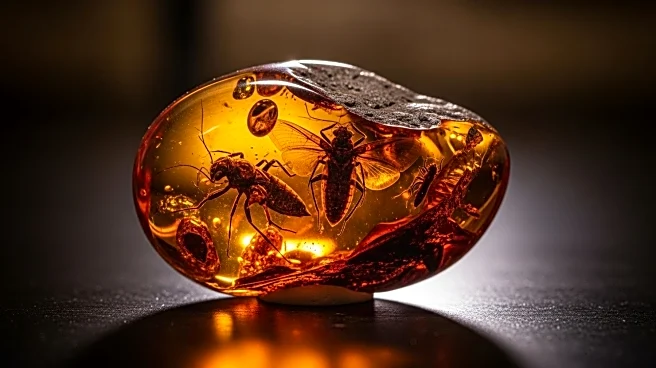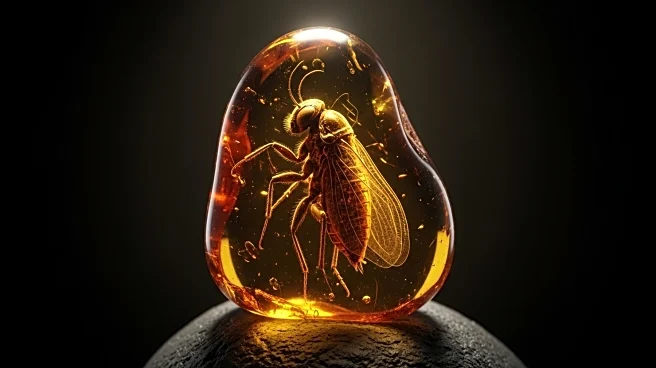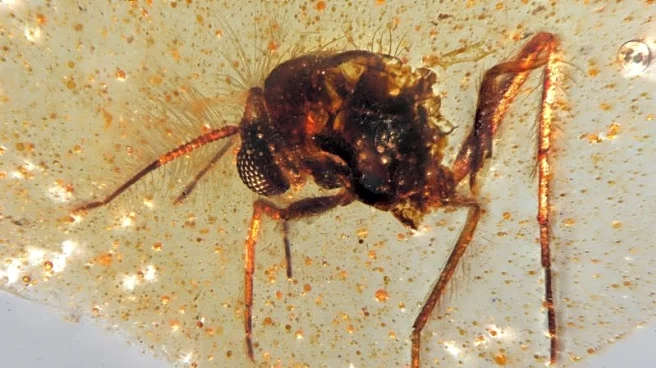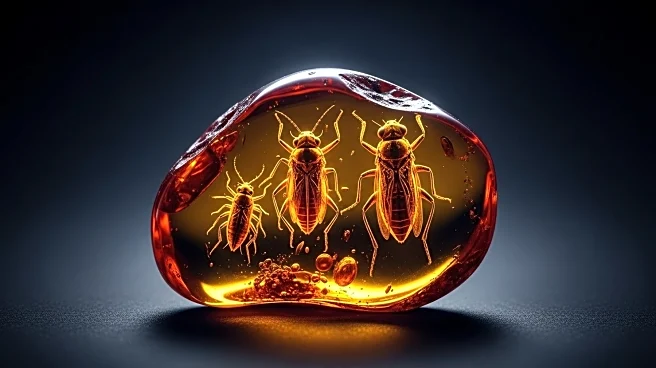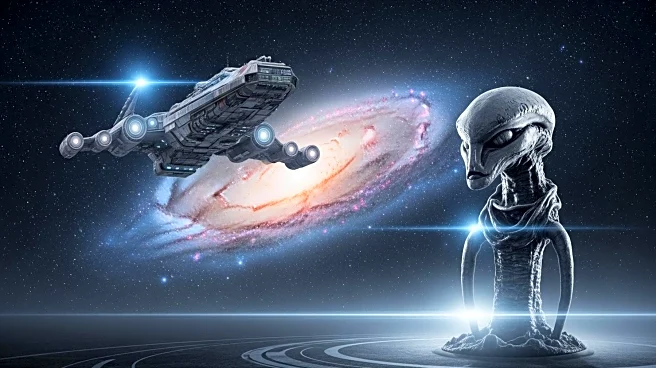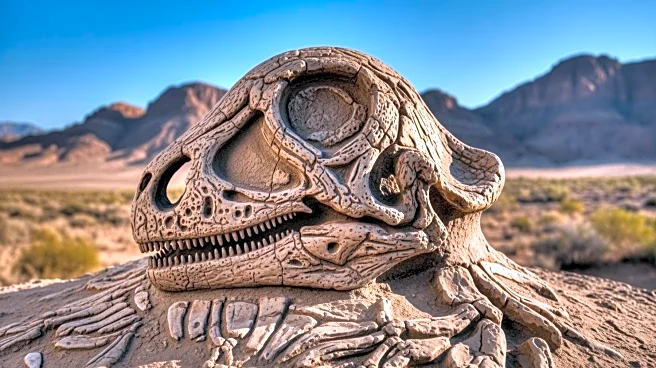What's Happening?
Scientists have uncovered prehistoric insects preserved in amber in South America for the first time, offering new insights into Earth's biodiversity during the Cretaceous period. The discovery was made at a sandstone quarry in Ecuador, where researchers found amber fragments containing ancient insects, pollen, and tree leaves. These specimens date back 112 million years, a time when flowering plants were beginning to diversify globally. The amber deposits, previously known to geologists and miners, were located on the edge of the modern Amazon basin. The findings include ancient beetles, flies, ants, and wasps, providing a glimpse into the interactions between insects and flowering plants during the era of the dinosaurs.
Why It's Important?
This discovery is significant as it sheds light on the evolutionary history of the Amazon rainforest and the role of insects in the diversification of flowering plants. The preserved specimens offer a unique window into the past, helping scientists understand the ecological dynamics of ancient ecosystems. The research could lead to a better understanding of how current biodiversity evolved and the factors that influenced these changes. The findings also highlight the importance of amber as a medium for preserving ancient life forms, offering insights into the relationships between plants and insects that have shaped modern ecosystems.
What's Next?
Researchers plan to continue analyzing the amber trove to further explore Cretaceous-era biodiversity. This ongoing study aims to uncover more details about the insects that contributed to the evolution of flowering plants. The findings may lead to new discoveries about the ecological interactions that occurred during the time of the dinosaurs, providing a deeper understanding of the evolutionary processes that have influenced current biodiversity.



